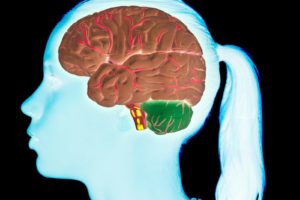As an addiction counselor, I have seen first-hand the devastating effects of addiction on individuals and families. While many people associate addiction with drugs and alcohol, it’s important to recognize that addiction can take many different forms. As a foster parent, it’s crucial to understand the link between trauma, the brain and addiction in order to recognize the signs of addictive behavior that may not be immediately apparent.
In this article, I will provide insight into the various forms of addiction, including technology, sugar, and hoarding, and offer recommendations for foster parents to recognize the possibility of addictive behavior that is out of the norm. This perspective is being driven by not only literature, but also as a parent and professional that has worked with countless families in the DFPS system that have successfully worked through these challenges and some that are still working through them.
the brain and addiction
Addiction is a complex disease that affects the brain in several ways. When a person experiences a pleasurable sensation, such as the rush of dopamine that comes from using drugs, their brain associates that activity with pleasure and reinforces the behavior. Over time, the brain’s reward system can become rewired, making it difficult for an individual to resist the urge to engage in addictive behaviors. This is why addiction is often characterized as a brain disease. It is important to categorize that addiction within the context of the definition can be looked as both physiological and psychological dependence (Society of Neuroscience, 2018).
trauma and addiction
Trauma can also play a significant role in addiction. When a person experiences trauma, their brain releases stress hormones such as cortisol, which can cause changes in the brain’s reward system. This can make an individual more susceptible to addiction, as they may turn to addictive behaviors as a way to cope with their trauma. Understanding the foundational process of how the sympathetic and parasympathetic systems work when a child is aroused is critical to assisting them in managing their behavioral outcomes. According to (Rhoads, 2018), a clinical neuropsychologist at the UW Medicine Memory & Brain Wellness Center at Harborview Medical Center, “It is not possible to turn the sympathetic nervous system off completely, but I think shifting one’s breathing to a modulated, slow and relaxed pattern of not overly deep inhales and exhales as a way to turn the volume down on it.”
technology addiction
Technology addiction is becoming increasingly common, particularly among young people. As a foster parent, it’s important to be aware of the signs of technology addiction, such as a preoccupation with screens and a lack of interest in other activities. As a foster parent, I am often amazed at the frequency my child will work harder for access to her iPad–even though it is very regulated–than any other reinforcer. Encouraging your foster child to engage in other activities, such as sports or creative pursuits, can help to curb addictive behavior related to technology.
sugar addiction
Sugar addiction is another common form of addiction that is often overlooked. Like drugs, sugar causes a release of dopamine in the brain, which can create a cycle of craving and reward. Foster parents can help to mitigate the risk of sugar addiction by limiting the amount of sugary foods and drinks in the home, and encouraging healthy eating habits. This is always an excellent chance to be self-reflective as both a therapist and a foster parent at the behavioral systems you have in place within the home environment. I frequently ask myself: am I eating something I tell my child she shouldn’t eat because it is not good for her? It is hard to be introspective before a parent can be prescriptive to others about their food consumption preferences.
hoarding addiction
Hoarding is a form of addiction that can be particularly difficult to recognize, as it often presents as a harmless habit. However, hoarding can become a serious issue, leading to unsafe living conditions and even legal troubles. As a foster parent, it’s important to be aware of the signs of hoarding behavior, such as a reluctance to part with objects and a tendency to accumulate large amounts of possessions. An important consideration is that research shows some hording behavior can be related to trauma, specifically when neglect has been a present condition for the child. The ability to create an environment where the child is able to understand and control behavioral, relational and emotional systems to help create a homeostatic state for the child will greatly assist in being able to regulate this behavior.
recommendations for foster parents
As a foster parent, there are several signs/behaviors you can watch for to help mitigate the risk of addictive behavior in your foster child. According to Nationwide Children’s, these include:
- The odor of alcohol or tobacco or other odd odors on the breath or skin.
- A change in behavior, becoming more argumentative or isolating themselves.
- Spending more than 20 hours a week on the Internet or playing video games.
- Red eyes and chronic health complaints (flu-like aches and pains, upset stomach).
- Changes in eating or sleeping patterns.
- Loss of interest in school.
- A drop in grades.
- Skipping classes.
- New friends (with little interest in families or school activities).
- Chemical-soaked rags or papers.
- Paint or other stains on clothing, hands or faces.
- Feelings of loneliness.
- Depression.
- Harmful or risky behaviors (such as breaking things, vandalism, stealing).
- Hurting themselves (cutting their bodies).
- Compulsive behaviors.










